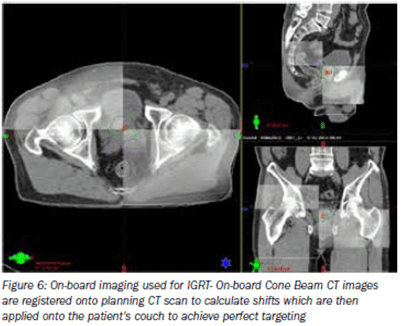
Stereotactic Body Radiation Therapy (SBRT) is a radiation therapy approach which delivers high dose radiation to a target within the body, in either a single or up to five treatment sessions. It is similar to central nervous system stereotactic radiosurgery, except that it deals with tumors outside the central nervous system (CNS).
How does SBRT work?
Stereotactic refers to the use of a specifically designed coordinate- system to locate small targets inside the body. This specialized form of radiation involves the use of multiple, highly precise radiation beams to safely deliver high doses of radiation to the tumour, with very sharp dose gradient outside the tumor and the surrounding normal tissue, in a manner not achievable by standard conventional radiation therapy.
The ability to deliver SBRT has been made possible by the use of better quality imaging e.g. CT scans, PET, MRT as well as other advanced imaging platforms to localize the tumor in four dimensions. Unlike tumours in the brain, tumours in the body can move with respiration which has to beaccounted for.
As this type of treatment requires millimeter precision, it utilizes accurate methods to ensure that radiation is focused on a small area of target area. Immobilisation devices are equipment to ensure the patient does not move during the entire radiation therapy. These include head and neck ‘masks’ and body moulds.











